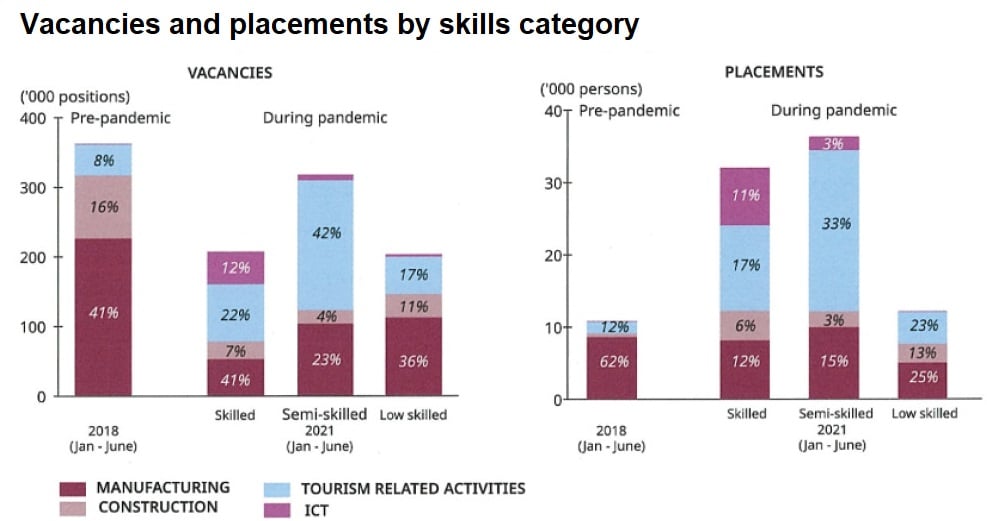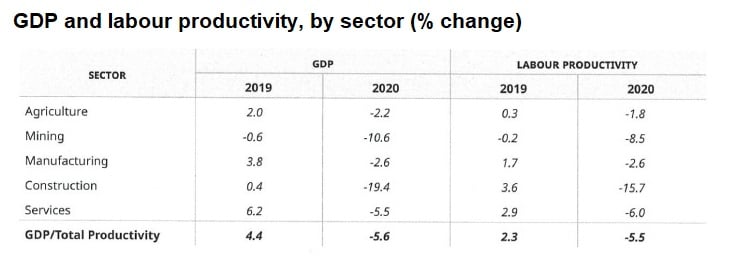
What HR & Employers Can Learn From 2020 Retrenchment Data
Are You Hiring?
Find candidates in 72 Hours with 5+ million talents in Maukerja Malaysia & Ricebowl using Job Ads.
Hire NowAccording to the Social Security Organisation (Socso), the service and manufacturing sectors recorded sectoral retrenchment rates of 69% and 21%, respectively, last year. These sectors topped other sectors amid business operations' restrictions.
Increasing retrenchment rates
In 2019, the retrenchment levels were 57% for the service sector and 32% for the manufacturing sector. The affected working hours and business revenues caused the hike of retrenchment rates.
For the first half of 2021, the retrenchment rates were 72% (service) and 18% (manufacturing).
Similar to other countries, the hardships impacted the local economy and negatively affected its labour market, with over 100,000 retrenchments recorded last year and almost 35,000 in the first half of 2021.
In contrast, Malaysia's unemployment rate of 5.3% in May last year was the highest since 1990. Meanwhile, the 4.5% unemployment rate in 2020 was higher than the average full year's unemployment rate of 3.4% recorded yearly before Covid-19.
This data was according to the Ministry of Finance's (MoF) Budget 2022 Economic Outlook report.

Sources: Ministry of Human Resources and Socso.
Retrenchment data within the service sector
The finance ministry said that within the service sector, retrenchments were primarily in the food and beverage (F&B) and accommodation sub-sectors caused by travel bans, which impacted transportation and tourism-related activities.
MOF noted that from more than 34,700 workers retrenched as of June this year, the job losses happened essentially among skilled (64.6%) and semi-skilled (27.6%) workers.
As for tourism-related activities, the wholesale-retail trade subsector recorded 21% retrenchments of its workforce. This number is the highest in 2020 against total service retrenchments, followed by:
-
Accommodation and F&B at 20%,
-
Transportation at 10%, and
-
Arts, entertainment & recreation at below 10%.
A shift towards high tech and high-skilled labour
The MoF also said that industries must shift towards high technologies and high-skilled labour to decrease the dependency on foreign workers.
In its Economic Report 2021/2022, MoF said that the affected sectors must invest in upskilling and reskilling efforts to increase their workers' productivity and sectors' performance. The ministry also noted that skills and expertise are required for technology adoption and application.
Before the pandemic, there were concerns about Malaysia's heavy reliance on unskilled and low-skilled foreign workers. Malaysians' hesitation to involve in 3D (dirty, dangerous and difficult) jobs resulted in the foreign workers' monopolisation in particular sectors.
MoF said that many foreign workers were involved in labour-intensive industries such as construction, plantation, manufacturing, agriculture, and the domestic sector.

Source: Department of Statistics.
High retrenchment rates among foreign workers during the pandemic
MoF explained that with the Movement Control Orders' (MCOs) implementation, the restriction and suspension on several economic activities had decreased the number of on-site workers. This action resulted in high retrenchment levels, specifically among foreign workers.
Additionally, Putrajaya's order to send foreign workers to their home country and tighten foreign entry into the country contributed to the labour shortage, particularly in the construction and agriculture sectors. It led to a sharp drop in GDP growth and labour productivity last year.
The Construction Industry Development Board said the construction sector shrunk by 19.4% last year. Labour productivity in the construction sector decreased by 15.7% in 2020.
MoF added that labour productivity in the agriculture sector declined by 1.8% in 2020, as its growth shrunk by 2.2%.
The Malaysian Employers Federation informed a shortage of 40,000 workers in the plantation industry that resulted in RM10 billion of losses, despite the 26% price increase in palm oil prices last year.
According to MoF, these are among the critical issues within industries and individuals identified during the Covid-19 pandemic:
-
Low utilisation of technologies in the construction sector,
-
High dependency on tourism receipts and tourist arrivals, and
-
Individuals' lack of savings.
Articles that may interest you
Budget 2022: Everything HR and Employers Must Know
Employers Can Now Get COVID-19 Self-Test Kits From SOCSO
Here are the Proposed Amendments to the Employment Act and OSHA

